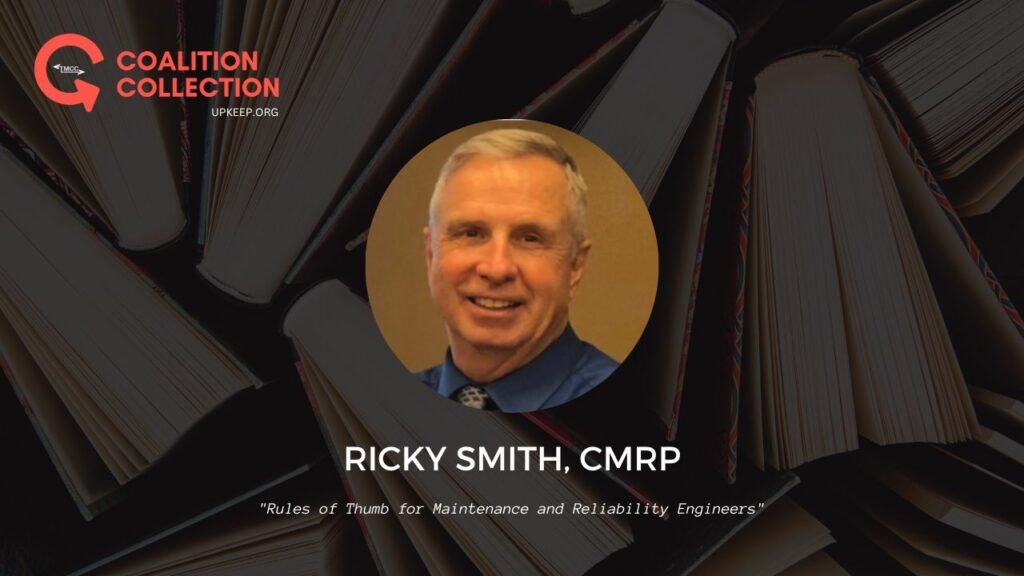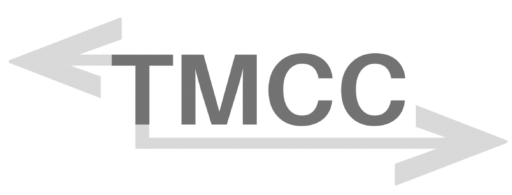
Please note, this interview has been modified for clarity and for the following format. To watch the full Chat in its entirety, please go to upkeep.org/previous-chats
Ricky Smith (CMRP, CMRT, CRL) joins us to answer questions about his book “Rules of Thumb for Maintenance and Reliability Engineers.”
Ricky Smith is a well-known Maintenance and Reliability book author, consultant, and best practices educator.
He has over 30 years’ experience working as a Maintenance and Reliability Professional. In addition, Ricky worked as a Maintenance Consultant/Educator with hundreds of companies in over 30 countries worldwide. Today, he currently brings his decades of experience to empowering and assisting the UpKeep team as an Expert in Residence and to The Maintenance Community Coalition as one of our featured authors. Ricky used the information he gained while working at Alumax Mt Holly (Alcoa Mt Holly) – the world class maintenance model – and worked with Keith Mobley on writing this book.
Ricky is a Certified Maintenance and Reliability Professional (CMRP), a Certified Maintenance and Reliability Technician (CMRT) and a Certified Reliability Leader (CRL).
In your book, you say there are 5 reasons why companies don’t measure reliability:
- Work orders don’t capture all of the emergency work
- Not every asset is loaded in to the CMMS/EAM
- It is important because other metrics provide equivalent value
- The maintenance organization is in reactive mode and there’s no time
- There are too many other problems to worry about
What would you say is the most common reason from your experience, and how does someone argue against it?
A lot of these work together. You have to know if you’re having failures. If you don’t have the right metrics, it doesn’t matter. The big one – The maintenance organization is in reactive mode and there’s no time. If you’re reactive, you’re going to have to do something different if you expect a serious change. I recommend companies focus on one area, the one that’s got the biggest opportunity where if you make an impact on it, people are going to pay attention.
Note: The Group consensus is 1 & 4 being the most common.
You also talk about what it takes to make the client go from reactive to RCM and who takes ownership in that process.
When there’s a lack of understanding, whether it be the client or management themselves, what actions do you recommend someone take in response?
What we’re trying to do with RCM is mitigate failure modes. The maintenance manager takes ownership in this process. A lot of times people don’t want to take ownership and there’s a problem. We have to admit that we have a problem and then we have to solve it. We can’t just put bubble gum on it and say it’s good for now. We need to make sure we restore the asset back to like new condition.
In the following chapter, you talk about putting a plant-wide focus on functional failures.
What course of action would you recommend to someone who is trying to do this, but maybe getting pushback from a financial perspective from the company?
I hear this all of the time. I learned this from John Day, he said, the way it works is we look at cost, cost by asset. Is the cost on the asset going up or going down? Because if all the work orders are tied to an asset, and they’re closed out accurately, then we should know how much money we’re spending. We should see cost trending up or trending down on your critical assets. You may not do this with all of your assets, but start with your most critical ones first. That will make a big impact in reliability.
Speaking of failures, you talk about the top four reasons predictive maintenance fails:
a. The collection of the PdM data is not viewed as part of the total maintenance process
b. The collected PdM data arrives too late to prevent equipment failures
c. Many companies fail to take advantage of data from PLCs and DCSs
d. Most PdM data is dispersed into too many non-integrated databases
How do you see data technology playing a role in improving predictive maintenance and why should companies be proactive in pursuing these solutions?
Why don’t they take advantage of [data]? A lot of it has to do with a lack of knowledge. That’s why training is important. Every company needs to have a training budget and they need to make sure they’re following that training budget.
We have to make sure we have the right technology to help us. There’s a lot of software out there right now that can help you. Equipment fails only certain ways, we should know [those ways]. We should pursue [knowing those ways].
Lastly, for someone who maybe has yet to read this book, what initially drove you to write this and what would you say is the best use case for this book?
The book is not made to read, but to identify. You can search whatever problem you’re having and you’ll find a lot of different answers to it, you’ve just got to find the right one that helps you. That’s what it’s all about.
“Rules of Thumb for Maintenance and Reliability Engineers” is now available to borrow in the Coalition Collection Library here.
